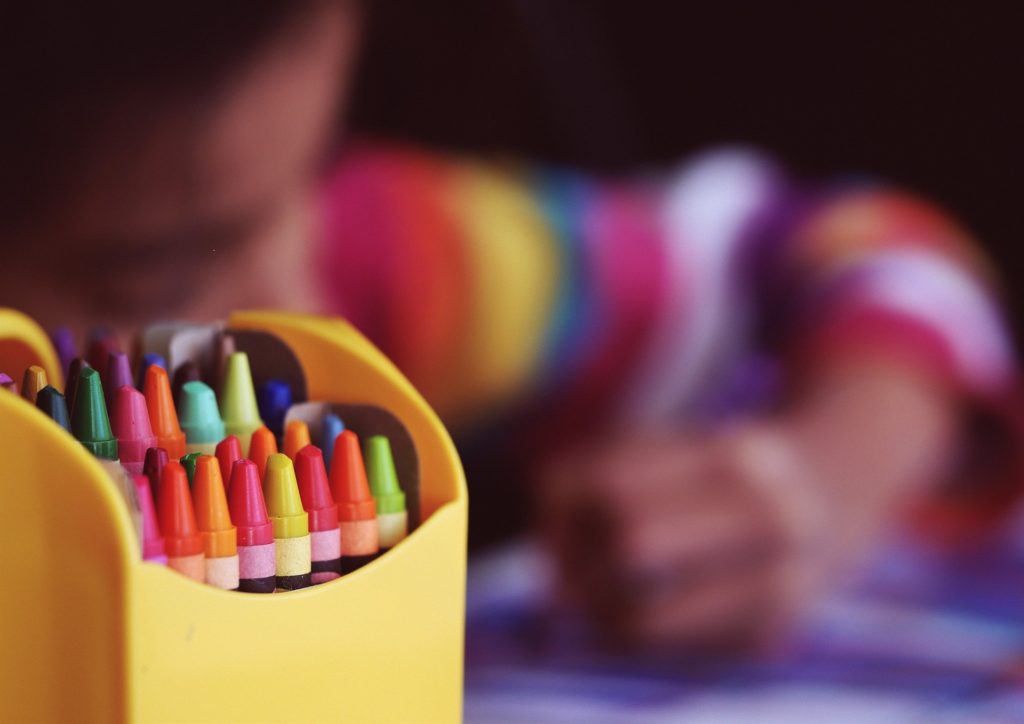Mindfulness as a Coping Skill/La Atención Plena Como Habilidad de Afrontamiento
Posted by Maria Droste Counseling Center on Feb 01, 2021 in Transitions, Growth and Fulfillment
*Desplácese hasta la parte inferior de la página para obtener la traducción al español*
Everyone experiences some sort of stress daily, no matter what stage of life they’re in. Worry and anxiety affect everyone at some point- it’s human nature, especially in times of uncertainty.
Practicing mindfulness can be an effective way to cope with a lot of the stress that comes our way. Mindfulness is the ability to be totally present and aware of where we are and what we’re doing. In today’s hectic world, this is sometimes not as easy as it sounds and takes consistent effort to make it an everyday habit.
There are various methods of practicing mindfulness as a way of coping; the key is to make it a part of your routine. Here are some ways that you can practice mindfulness to cope with stress and anxiety.
Meditate

Meditation is one of the most common ways to incorporate mindfulness into your daily routine. There two types of mediation; guided and unguided. Guided meditation is led by someone else, whether it be face to face or an audio recording. Their voice directs you step-by-step through your meditation. Unguided meditation or silent meditation is usually done alone in a place without noise or other distractions.
Meditation can lower stress, improve sleep, and improve the ability to focus. Research has shown that it even increases grey matter in the brain.
Grab a coloring book
Coloring isn’t just for kids anymore! An activity that parents once sought to keep their children calm or entertained has now been adopted by adults to help them de-stress. While there is some debate on whether adult coloring books qualify as a form of art therapy, it’s safe to say that they are an effective form of meditation and stress relief.

During meditation, your brain goes into a relaxed state by focusing on the present and blocking out everything going on around you. When focusing on what they’re coloring, many people enter that meditative “zone,” or state of calm without even realizing it.
Write it down
Journaling is a well-known method of practicing mindfulness regularly. It can be helpful if you want to quiet your mind by putting your thoughts on paper. You may find it easy to let stress, anxiety, frustration, or even anger go when you write down what you’re feeling. It also helps to see your thoughts on paper, even after a couple of days, to gain a new perspective on things.
Gratitude journaling is also a powerful mindfulness activity. Writing down even the smallest things that make you happy and that you’re grateful for can be enough to shift your mindset and set the tone for the day.
Take a walk
Walking as a form of meditation is a way to focus on the moment, being aware of each step and breath instead of letting your mind race with stuff that needs to be done, phone calls that need to be made, or what you’re having for dinner that night.
You can practice mindful walking anywhere, in a parking lot between errands, walking the hallways in an office building, or on a hiking trail.
Put the phone down
As handy as our smartphones are, they can also be a significant source of distraction. You can’t be in the moment when you’re scrolling social media. It’s important to remember to unplug every so often. Being intentional about reducing screen time can have physical benefits and emotional ones, such as getting a better nights’ sleep.
Do one thing at a time
Intentionally focusing on one task at a time can be beneficial at work and home. Blocking out time to complete each task can help your mind from wandering and allows you to give complete attention to the task at hand.
Every little bit helps; what matters the most is that you’re consistent. Practicing mindfulness regularly will help you calm your mind, reduce anxiety, and give you tools to cope when stress hits. Even if you practice mindfulness for just five minutes each day, it can make a huge difference.
If you feel overwhelmed and find it difficult to unwind, please contact Maria Droste Counseling Center at 303-867-4600. We are here to help.
Written by Jennifer Arnold, MA

Depression is treatable!
For $50, you could support someone coping with trauma to find joy and safety again. Thanks for ensuring your community receives the mental healthcare they need, regardless of ability to pay.
La Atención Plena Como Habilidad de Afrontamiento
Todas y todos experimentan algún tipo de estrés a diario, sin importar en qué etapa de la vid se encuentren. La preocupación y la ansiedad afectan a todas y todos en algún momento; es la naturaleza humana, especialmente en tiempos de incertidumbre.
Practicar la atención plena puede ser una forma eficaz de hacer frente a gran parte del estrésque se nos presenta. La atención plena es la capacidad de estar totalmente presente y consciente de dónde estamos y qué estamos haciendo.
En el mundo agitado de hoy, esto a veces no es tan fácil como parece y requiere un esfuerzo constante para convertirlo en un hábito diario.
Existen varios métodos para practicar la atención plena como una forma de afrontar las situaciones que se nos presentan; la clave es convertirlo en parte de tu rutina. Aquí hay algunas formas en las que puede practicar la atención plena para lidiar con el estrés y la ansiedad.
Meditar
La meditación es una de las formas más comunes que existen para incorporar la atención plena a tu rutina diaria. Hay dos tipos de meditación; guiada y no guiada. La meditación guiada es dirigida por otra persona, ya sea cara a cara o en una grabación de audio. Su voz te dirige paso a paso a través de tu meditación. No guiada o la meditación silenciosa generalmente se realiza a solas en un lugar sin ruidos ni otras distracciones.
La meditación puede reducir el estrés, mejorar el sueño y mejorar la capacidad de concentración. La investigación ha demostrado que incluso aumenta la materia gris en el cerebro.
Consigue un libro para colorear
¡Colorear ya no es sólo para niños! Una actividad que las madres o padres alguna vez buscaban para mantener a sus hijas e hijos tranquilos o entretenidos ahora ha sido adoptada por adultas y adultos para ayudarse a eliminar el estrés. Si bien existe cierto debate sobre si los libros para colorear para adultas y adultos califican como una forma de arteterapia, es seguro decir que son una forma efectiva de meditación y alivio del estrés.
Durante la meditación tu cerebro entra en un estado relajado al concentrarse en el presente y bloquear todo lo que sucede a tu alrededor. Cuando nos concentramos en lo que estamos coloreando, muchas personas entramos en esa “zona” meditativa o estado de calma sin siquiera darnos cuenta.
Escríbelo
Llevar un diario es un método bien conocido para practicar la atención plena con regularidad. Puede ser útil si deseas calmar tu mente poniendo tus pensamientos en papel. Puede que te resulte fácil dejar ir el estrés, la ansiedad, la frustración o incluso la ira cuando escribas lo que sientes. También ayuda ver tus pensamientos en papel, incluso después de un par de días, para obtener una nueva perspectiva de las cosas.
El diario de gratitud también es una poderosa actividad de atención plena. Escribir incluso las cosas más pequeñas que te hacen feliz y por las que estás agradecida o agradecido puede ser suficiente para cambiar tu forma de pensar y marcar el tono del día.
Dar un paseo
Caminar como una forma de meditación es una manera de concentrarse en el momento, ser consciente de cada paso y de casa respiración en lugar de dejar que tu mente piense en otras cosas que debes hacer, llamadas telefónicas pendientes o la cena que hay que preparar esa noche.
Puedes practicar la caminata consciente en cualquier lugar, en un estacionamiento entre pendientes, caminar por los pasillos de un edificio de oficinas o en una ruta de senderismo.
Guarda el teléfono
Por muy prácticos que sean nuestros teléfonos inteligentes, también pueden ser una fuente importante de distracción. No puedes concentrarte en vivir en el momento si mientras tanto estás revisando tus redes sociales. Es importante recordar desconectarse de vez en cuando. Tener la intención de reducir el tiempo frente a una pantalla puede tener beneficios físicos y emocionales, como dormir mejor por la noche.
Haz una cosa a la vez
Centrarse intencionalmente en una tarea a la vez puede ser beneficioso en el trabajo y en el hogar. Asignar un tiempo para completar cada tarea puede ayudar a que tu mente no divague y le permite prestar completa atención a la tarea en cuestión.
Cada pequeña cosa ayuda; lo que más importa es que seas constante. Practicar la atención plena con regularidad te ayudará a calmar tu mente, reducir la ansiedad y te dará herramientas para afrontar el estrés. Incluso si practicas la atención plena durante sólo cinco minutos al día, puedes marcar una gran diferencia.
Si te sientes abrumada o abrumado y te resulta difícil relajarte, comunícate con Maria Droste Counseling Center al 303-867-4600. Estamos aquí para ayudar.
Escrito por Jennifer Arnold, MA. Traducido por Sandra D. Gómez
Need Help?
If you would like to speak to a therapist about this subject or about any other issue you may be experiencing, contact the Maria Droste Access Center at 303-867-4600.
Get Informative Posts like this Sent to Your Inbox
Maria Droste posts regularly on helpful mental health and wellness subjects like the one you just read. We send these out in our free monthly newsletter. Subscribe today and get informative reads like this sent straight to your inbox.
